5 Reasons Why Your Hot Tub Water is Green and How to Fix It
Is your hot tub water green? Don’t panic! Find out the 5 common reasons why this happens and how to fix them in this informative and helpful article. Learn how to restore your water to its clear and sparkling state and prevent green hot tub water in the future.
A few things can cause green hot tub water, but the most common cause is algae growth. This can happen if the pH balance in the hot tub needs to be properly maintained or if there needs to be more sanitizer in the water. Other causes include:
- Metals or minerals in the water, such as iron, copper, or manganese
- Tanning products or other chemicals that have been introduced to the water
- A dirty hot tub, such as if the filters are not cleaned regularly or if the shell of the hot tub is not properly sanitized
Why Your Hot Tub Water is Green
Green hot tub water is usually caused by algae growth or high metal content, such as copper or iron. Algae can spread quickly when sanitizer levels are low, temperatures are high, and sunlight is present. Correct it by shocking the water, cleaning filters, and adjusting chemicals.
Green Oasis Got Gloomy? Quick Fix in 3 Steps:
1. Balance the Basics:
- pH Patrol: Grab your test kit and check your water’s pH. Aim for a cozy 7.2-7.8 range. Think Goldilocks, not too acidic, not too alkaline, just right!
- Sanitizer Squad: Test your sanitizer (chlorine or bromine) level too. Each has its preferred range, so consult the product guide for the perfect amount. A slight adjustment might be all it takes.
2. Shock Therapy:
- Algae Attack: Grab your trusty shock treatment (readily available at your local hot tub haven) and unleash a targeted blast against those pesky algae. Imagine a superhero landing a decisive blow to save your watery paradise.
- Rest & Recuperation: Give the shock treatment 24 hours to work magic and vanquish any remaining algae warriors.
3. Sparkling Renewal:
- The Big Drain: If your water still has a greenish tint, it’s time for a fresh start. Drain and refill your oasis with sparkling new water.
- Deep Clean Mission: While the tub’s empty, grab your scrubbing gloves and thoroughly clean everything. Filters, shells, jets—no crevice will escape your cleansing crusade!
Voila! Crystal-clear bliss awaits once more. And remember, prevention is critical—regular testing and maintenance keep your hot tub a haven of relaxation, free from the green grumpiest.
Tips for keeping your hot tub water clean and clear:
- Test the pH and sanitizer levels regularly and adjust them as needed.
- Shock the hot tub regularly, mainly if you use it frequently.
- Clean the hot tub thoroughly regularly.
- Keep the hot tub covered when it is not in use.
- Avoid using tanning products or other chemicals in the hot tub.
NOTE
Consult a hot tub professional with any questions or concerns about your water.
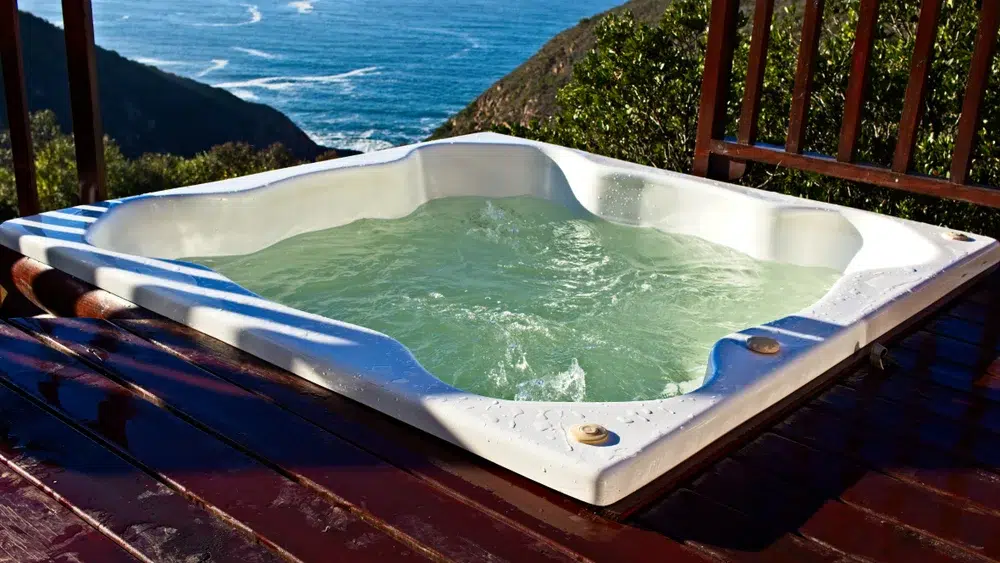
Five Green Grumps: Banishing the Causes of Cloudy Hot Tub Water
In this article, we’ll explain the five common reasons why your hot tub is green and how to fix them. We’ll also give you some tips on how to prevent if your hot tub water is green in the future. Let’s get started!
Reason #1: Algae Invasion
Ever dreamed of a bubbly escape in your backyard, only to find it’s transformed into a swamp instead? Algae, those microscopic plant villains, might be behind the green takeover. They love your hot tub’s warm, cozy environment, thriving and turning crystal-clear water into a slimy, murky mess.
Algae’s Green Reign:
- Shades of Slime: Depending on their type and sun exposure, these tiny invaders can be green, black, or even yellow, like a bad fashion show gone wrong.
- Slippery Surfaces: Beware of their slimy film coating your hot tub walls and floor, making it treacherous to navigate (and clean!).
Reason #2: Insufficient Sanitization
Are you dreaming of a dip in your paradise of bubbling bliss, only to find it’s become a swamp fit for Shrek? Insufficient sanitation might be the sneaky gremlin behind the green. Think of sanitizers as superheroes for your water, constantly battling bacteria and other microscopic nasties. But even heroes get tired sometimes, especially in the hot tub’s warm, bather-filled environment.
How Sanitation Heroes Get Sleepy:
- Heat Wave Blues: Hot water makes sanitizers work overtime, like fighting crime in a sauna.
- Bather Overload: Too many swimmers are like throwing extra villains at our heroic sanitizers, leaving them overwhelmed.
- Organic Attacks: Leaves, dirt, and other sneaky organics act like kryptonite to sanitizers, weakening their superpowers.
Reason #3: Metal Contamination
So you thought your hot tub was an escape from the everyday, but instead, you’re staring down a murky lagoon? Metal might be the culprit lurking behind the green. These sneaky little elements, like copper, iron, or manganese, can naturally hang out in tap water or sneak in from corroded pipes and fittings.
How Metals Turn Your Oasis Green:
- Chemical Chaos: Chlorine or other sanitation buddies react with metals, causing them to change color like a chameleon on steroids. Copper can turn your water into a green swamp, iron stains it rusty brown, and manganese throws a goth party with black or purple water.
- Equipment Blues: These metals aren’t just harmful to aesthetics; they can damage your hot tub’s inner workings and make your sanitizer throw up its hands (figuratively).
Reason #4: Green Water Woes
Ever dreamed of a luxurious hot tub soak, only to find it’s become a breeding ground for green gunk? Pollen and dirt might be the party crashers. These tiny troublemakers can sneak in through the air, rain, or even hitch a ride on your feet, turning your crystal-clear oasis into a murky mess.
How Pollen & Dirt Turn Your Water Green:
- Green Glitter: Pollen can give your water a greenish shimmer like someone sprinkled fairy dust from a swamp.
- Cloudy Confusion: Dirt particles make your water look hazy and unclear as if you forgot to put on your diving goggles.
- Filter Foul Play: These guys clog up your filter, making it work overtime and leaving dirt to run amok.
- Algae & Bacteria Bonanza: Pollen and dirt act like a buffet for these unwelcome guests,
For more about How Much Foam Is Normal In A Hot Tub.
Reason #5: Faulty Equipment
When your dreamy hot tub soak turns into a green swamp encounter, faulty equipment can be the culprit. This bubbling oasis relies on several hardworking pieces to keep things clean and bubbly, like pumps, heaters, jets, filters, and control panels. When these heroes falter, your water quality suffers.
How Equipment Mishaps Lead to Green Woes:
- Sluggish Pump: If your pump loses power, water circulation goes limp. Stagnant water welcomes algae and bacteria, the party crashers you don’t want.
- Chilly Heater: A heater with a case of shivers keeps your water cool, making it an unwelcome haven for sanitizers. No heat means algae and bacteria can thrive.
- Bubble Trouble: Are your jets acting up? The air bubbles they create can trap dirt and debris, making your water murky.
Feel free to use our Hot Tub Water Green app calculator for troubleshooting and recommendations.
Hot Tub Water Green – Troubleshooting
Case Study: Sharon’s Green Hot Tub Water Dilemma
- Problem: Sharon noticed her hot tub water turning green after only two weeks. She had already shocked the water, resulting in very high chlorine levels, and found that her total alkalinity (TA) was almost nil.
- Solution: Following the advice of experienced hot tub owners, Sharon stabilized her TA levels and then adjusted the pH to around 7.2. She also considered using bicarbonate of soda to increase TA but opted for hot tub-specific chemicals for precision.
- Immediate Action:
- Monitor chlorine levels and adjust as needed.
- Ensure pH is around 7.2.
- Check TA and adjust if necessary.
- Long-Term Maintenance:
- Maintain chlorine levels between 2-4 ppm.
- Keep TA between 80-120 ppm.
- Regularly test and adjust pH levels.
How to Prevent if the Hot Tub Water is Green
Now that you know how to fix green hot tub water, you might wonder how to prevent it from happening again. How to keep your hot tub water clear and clean at all times:
- Test and balance your water chemistry at least once a week or more. The ideal levels are pH 7.2-7.8, alkalinity 80-120 ppm, calcium hardness 150-250 ppm, chlorine 1-3 ppm, and bromine 3-5 ppm.
- Shock your water weekly or after heavy use with a non-chlorine shock product to oxidize organic contaminants and boost sanitizer efficiency.
- Clean and rinse your filter cartridge every month or more often if needed. If it shows signs of wear and tear, replace it yearly or sooner.
- Drain and refill your hot tub every 3-4 months or more often if needed. Before refilling, use a pipe cleaner to flush out any residue from the plumbing system.
- A pre-filter reduces metal content when tap or healthy water fills your hot tub.
- Use a metal sequestering agent or remover product to prevent metal staining or oxidation.
- Use a stain and scale inhibitor product to protect your hot tub surfaces from metal deposits.
- Use an algaecide product to prevent algae growth.
- Use a clarifier or flocculant product to coagulate fine particles and make them easier to filter out.
- Keep your hot tub covered when not in use to block out sunlight, debris, and contaminants.
- Keep your desirable tub area clean and tidy to prevent dirt or debris from entering your water.
- Follow the manufacturer’s instructions for using and maintaining your hot tub equipment.
Hot Tub Water is greenish-yellow
It is usually a sign of yellow algae, which can grow in tiny crevices and hard-to-reach areas of your hot tub. Yellow algae can resist chlorine and bromine and cause your water to look cloudy, slimy, and smelly.
You need to do the following steps:
- Drain and refill your hot tub with fresh water.
- Use a pipe cleaner or a spa flush product to remove algae residue from the plumbing system.
- Clean and rinse the filter cartridge thoroughly.
- Shock the water with a high chlorine or bromine sanitizer dose, or use a non-chlorine shock product designed to kill yellow algae.
- Add an algaecide product to prevent algae growth in the future.
- Test and balance the pH and alkalinity levels of your water.
- Keep your hot tub covered when not in use to block out sunlight.
You may also like our guide about Why Does My Hot Tub Smell Like Pee?
Troubleshooting Tips From Real Hot Tub Owners
Prioritize Chlorine and pH Levels
- “Hot tub guy is wrong…your water should always be clear and clean if properly balanced. Add chlorine shock first to get your levels up. Adjust pH from there…” – Taryn McCrank Hancock.
- Chlorine (or bromine) is your primary sanitizer, and proper pH is vital for that sanitizer to work effectively. Low chlorine levels allow algae growth, while improper pH can lead to irritation and other water quality issues, even if your chlorine level is technically in range. This principle applies to all hot tub systems.
Shock Treatments
- “I shock it with an oxidizer. 1 tsp of shock [weekly]. I also swap the filter out once a week…” – Jeffrey Joslyn
- “…3 times a week, I add 1 tsp of granulated chlorine, and once a week, I rinse filter and add 1.5 tbsp of non-chlorine shock.” – Tim Powell.
- Shocking is crucial. Chlorine shock (dichlor) rapidly raises available chlorine to break down contaminants from heavy use or a water imbalance. Non-chlorine shock helps clear cloudy water, oxidizes wastes, and doesn’t add to your chlorine level (necessary for systems like Frog@ease).
Metal Management
- “Did you use a metal remover when you filled it? I’d add some ‘metal-gon’ like product …” – Dan Rehrauer.
- “I had a similar issue…directed to use liquid metal remover… then after 24 hours use a clarifier. It will make the metal clump together and your filter will remove it…” – Se Ancarlson
- Metals like iron and copper can turn water green or brown. While shocking can sometimes temporarily mask the issue, metal removers bind the metals for filtration. Clarifiers help the filter collect these complexes.
Alternative Systems
- Spa Marvel: User Tim Powell swears by this system, claiming minimal maintenance and excellent water clarity. Spa Marvel relies on natural enzymes and conditioners to reduce chemical demand.
- Brilliance for Spas: Amy Butery Waldram attributes her crystal-clear water to Brilliance. This is a bromine-based system, often preferred for its gentler smell and skin feel compared to chlorine.
- Saltwater Systems: Like those mentioned by Taryn McCrank Hancock, these systems generate chlorine from salt. Their benefit is often lower chlorine demand and less of a “chlorine smell.”
Closing Arguments:
Green hot tub water is not what you want in your spa oasis. It can indicate various problems with your water quality, such as algae invasion, insufficient sanitization, metal contamination, pollen or dirt contamination, or faulty equipment.
Follow these tips and enjoy your spa experience in a sparkling, clean environment. Happy soaking from the Hot Tub Patio! What’s your biggest challenge in maintaining your hot tub water? Share your thoughts below!







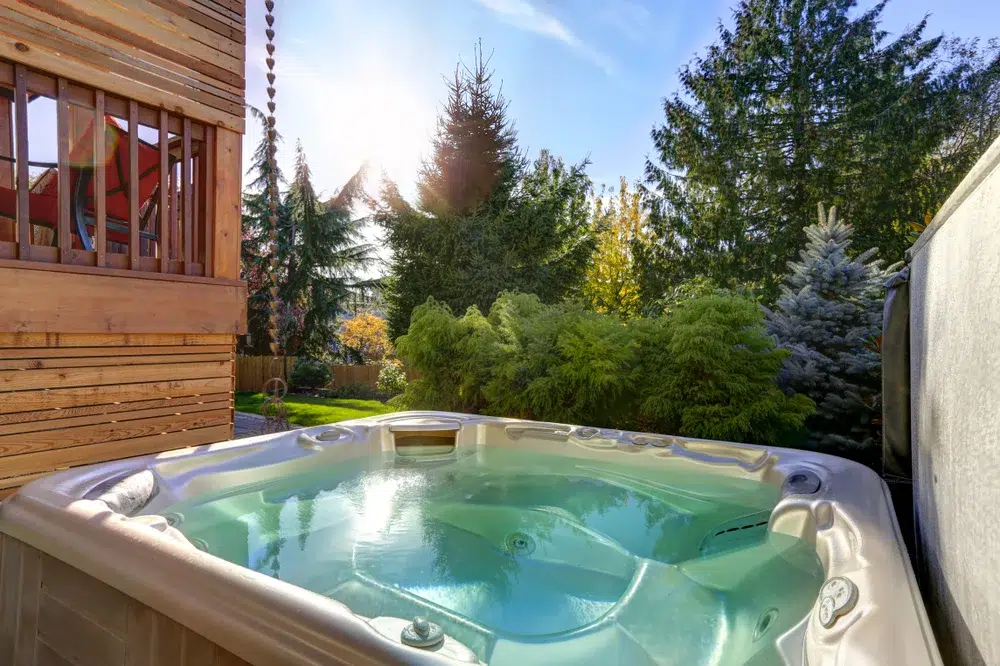


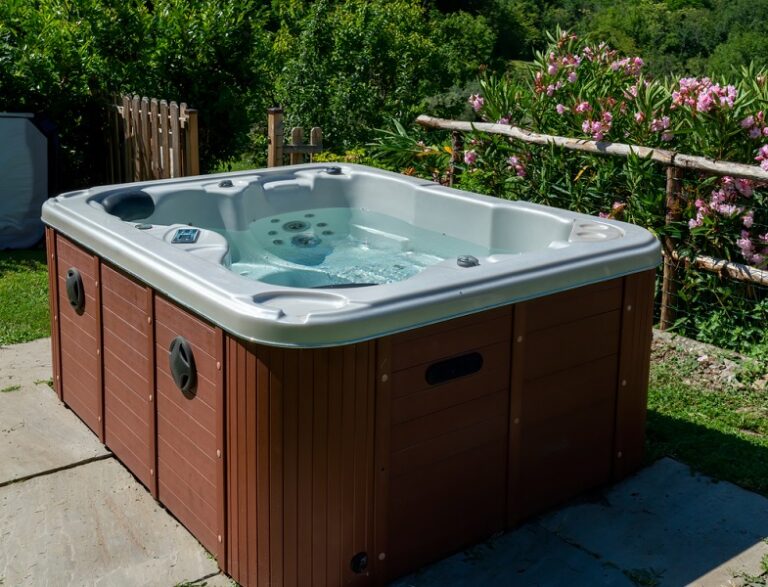
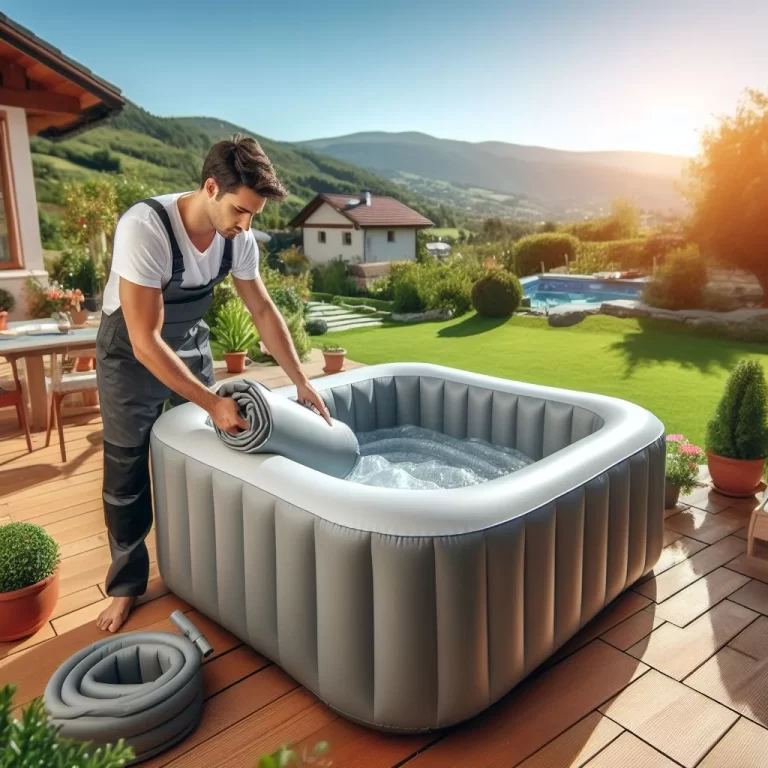
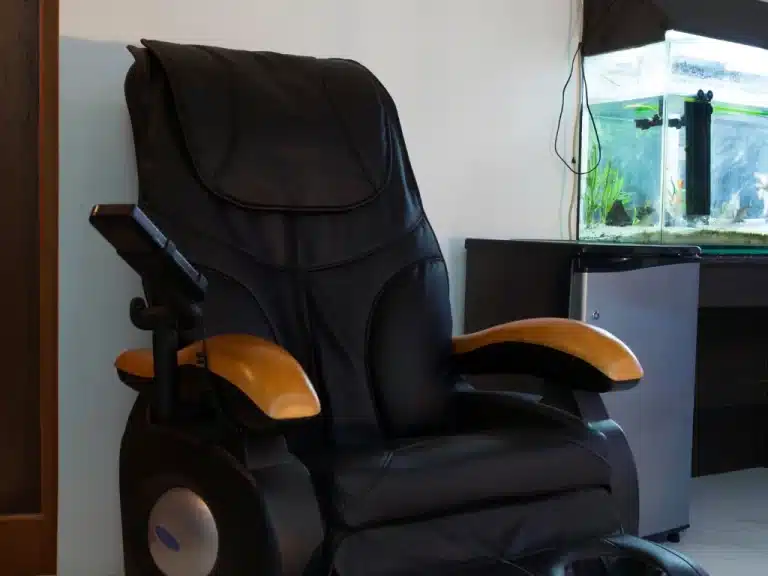

3 Comments